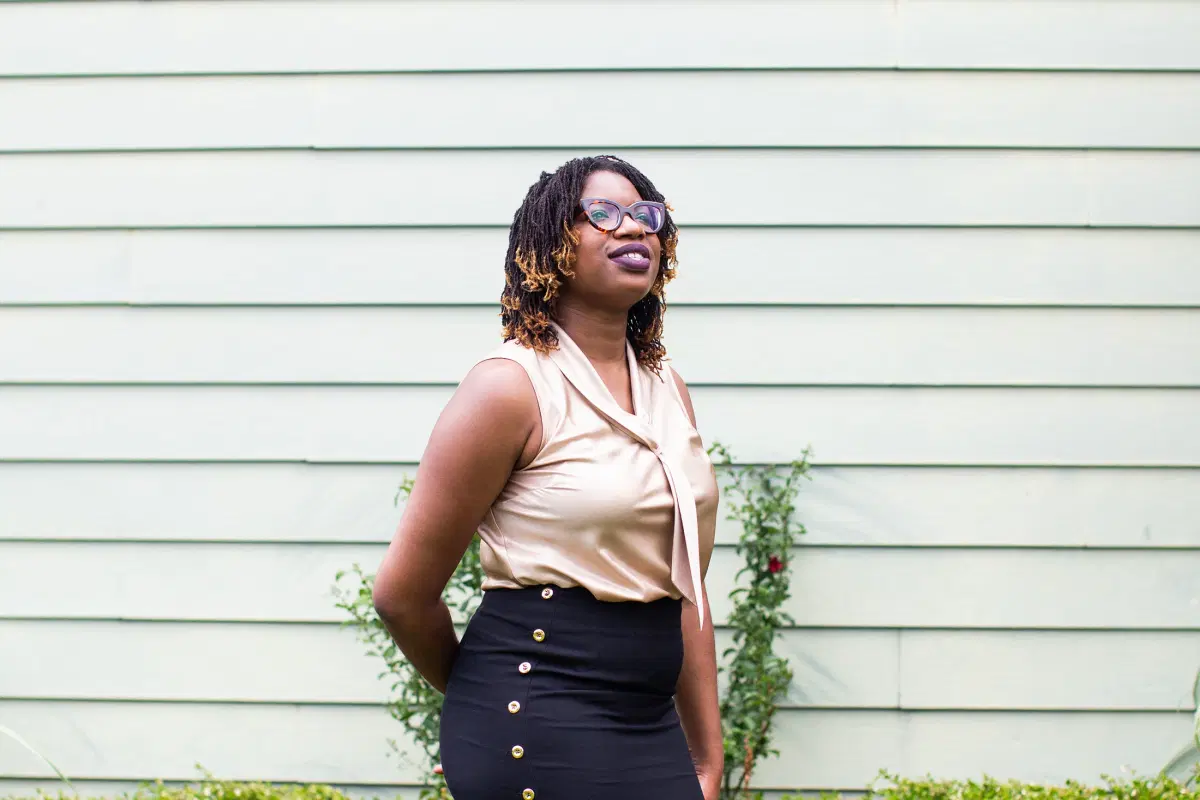As an Afro-Caribbean woman living in America, my experiences have led me to be a bridge between different worlds. My Jamaican immigrant parents raised me—a first-generation American—in a large, working-class, West Indian community in the Baychester area of the Bronx. I grew up taking pride in the African American culture and Caribbean culture inside and outside of my house. I learned about the intersections of food and culture, discourse through street talk and Jamaican patois, and the nuances of black culture through song and dance.
I was raised in the Victory Seventh-day Adventist Church, which I attended every Saturday and where much of my identity was formed. The church was beyond a sanctuary—it was a community center. We held Caribbean socials where we would play games like basket turnover (people would literally topple over chairs after winking at each other), sing African and Caribbean folk songs, and recite the works of Jamaican poet Miss Lou. The adults would dance, showing us youth our rich and vibrant heritage.
Topaz Smith. Photo: Jordana Bermúdez
In the Bronx I also connected with diverse communities from Europe, Asia, Africa, the Caribbean and South America. That global presence raised me to appreciate people from a variety of ethnic backgrounds, beyond Black and white labels. Each Saturday after church, we would frequent the local bodega, with the autonomy to cross the street without adults (a very big deal at the time), ordering 25-cent juices, Cheez Doodles, turkey sandwiches and Ring Pops. Through these weekly Saturday evening trips to the deli and countless hours spent working in the community soup kitchen on Sunday mornings, I learned to navigate social spaces and conversations based on my surroundings. I would hand out bags of nonperishable goods to community members in the church kitchen, often code-switching from “wa a gwan!” to “yo, what’s good.”
Through my interactions, I could distinguish archetypes of Bronx natives—though they may vary, there is definitely a culture that unites locals and a sense of awareness and street smarts that is always present. I realized the energy I was surrounded by was loud and eclectic amidst the financial struggles. However, there is pride for navigating challenges that teach grit, hustle and stamina. Whether I am by Yankee Stadium or Co-op City, there is a sense of ownership of the grind.
The recent groundbreaking ceremony of the Bronx’s Universal Hip Hop Museum, to be completed in 2023, cements the borough’s position as “the birthplace of hip-hop.” The influence of hip-hop and R&B music could not be avoided growing up, and we affectionately called the borough “The Boogie Down Bronx.” Songs like “Déjà Vu,” by Lord Tariq and Peter Gunz, serve as reminders of what the Bronx meant to many of us, as we grew up imitating rap artists and the beauty standards of vixens in rap videos. We would visit Fordham Road to get our nails done at discounted prices and purchase slinky party dresses, name belts, tight jeans and Nikes or Jordans to imitate the latest fashion trends. These days, that influence continues to hold sway over the borough’s culture, including its culinary scene. In the TED Talk The Next Big Thing Is Coming from the Bronx, for instance, Jon Gray of Ghetto Gastro addresses how his prominent collective is merging hip-hop culture with food to create a movement.
Memories of summers in the Bronx are clear. African hair braiding on White Plains Road by Senegalese and Malian hairdressers was vital, as box braids were how your hair would remain for the summer (if it was not permed or blown out by women from the Dominican Republic). Jamaican immigrants dominated my neighborhood, and the confluence of reggae and hip-hop were evident at summer cookouts, at which Beres Hammond and Beenie Man tunes blasted while the aromas of jerk chicken and steam fish with okra filled the air. There were Puerto Ricans salsa dancing on the boardwalk in Orchard Beach adjacent to basketball and racquetball competitions. We would ride our bikes, jump double Dutch on the sidewalk, swim in the pool and flag down ice cream trucks for hot dogs, chips, Sailor Moon popsicles and jumbo blue lollipops.
Although my roots are in the Bronx, my parents sent me to Westchester County for school. My parents’ staunch belief in education gave me the privilege to travel internationally almost every year and learn a foreign language. This afforded me insights on cultures outside of my West Indian community. The exposure I gained at the international middle and high school gave me clarity on ownership in the Bronx—who owned and who didn’t own. Each Friday, we visited South Korean grocery stores that sold West Indian food products like bulla, water crackers, banana chips and D&G Cream Soda. I became comfortable discussing with the store owners their place of origin as my cultural understanding increased drastically. These deeper insights expanded my interests, and I participated in horseback riding at the Bronx Equestrian Center, grabbed seafood on City Island, got chicken at Ghanaian restaurant Papaye and purchased goods from Eastern European grocery stores on Lydig Avenue.
Everyone probably knows something about the Bronx—home to Yankee Stadium and Little Italy’s Arthur Avenue; birthplace of talents like Kerry Washington and Ralph Lauren—but discovering its rich, diverse cultures and the energy that they bring is where the magic really is. The next time you’re in NYC, stay on the 4 or 5 heading uptown, and then get out and see for yourself.
Topaz Smith runs NYC-based travel company En-Noble, which curates educational and immersive itineraries that sustain local economies. Visit en-noble.com for more information about tours of the Bronx and elsewhere. En-Noble pledges that 1 percent of its revenue will be reinvested with local vendors to build their capacity and travel products.
